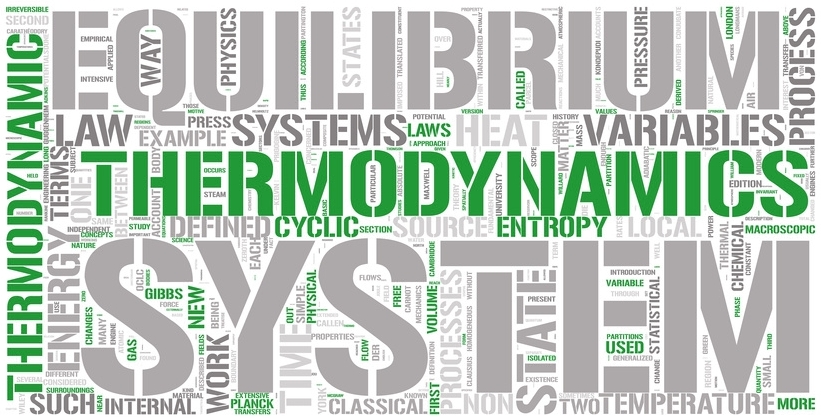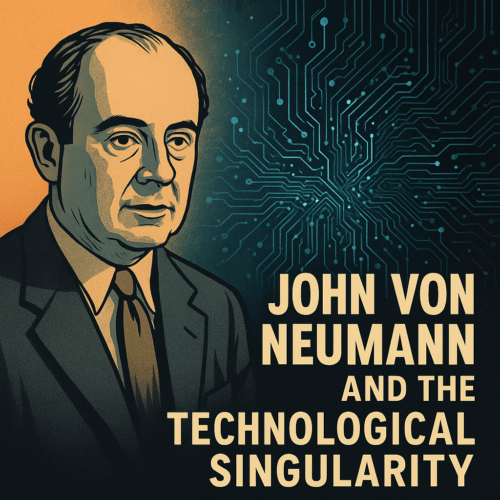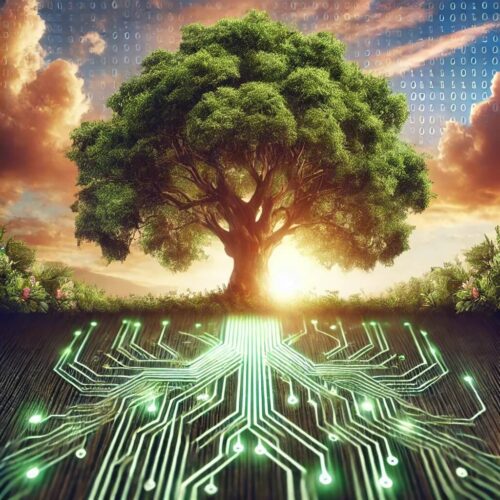The Importance of the 5 Base Economic Units in Singularity and Transhumanism Discussions
Matt Frohlich / Op Ed
Posted on: July 16, 2015 / Last Modified: July 16, 2015
 A first principle is a basic, foundational proposition or assumption that cannot be deduced from any other proposition or assumption. During a discussion on a given subject, it is important to establish the relevant first principles. As it would be cumbersome to do this for every individual discussion, an alternative is to develop an agreed upon terminology for the subject based on these first principles.
A first principle is a basic, foundational proposition or assumption that cannot be deduced from any other proposition or assumption. During a discussion on a given subject, it is important to establish the relevant first principles. As it would be cumbersome to do this for every individual discussion, an alternative is to develop an agreed upon terminology for the subject based on these first principles.
For instance, it would be foolish to discuss a sociological issue without first agreeing on the definition of such terms as norm or more, nor would it be acceptable to present a mathematical proof that violated basic mathematical axioms. Unfortunately there does not appear to be any such agreement on terminology for the technological singularity and transhumanism. This leads to many flawed discussions. The 5 base economic units are an attempt to rectify this situation by providing first principles through which the singularity/transhumanism can be discussed.
For instance, there does not seem to be any kind of consensus on what intelligence is, even at its most basic level. The same goes for scarcity. I will define within the context of the 5 base economic units what exactly intelligence and scarcity are. Furthermore I will use the 5 base economic units to debunk some of the common misconceptions surrounding these concepts.
This discussion on the 5 base economic units is not perfect, and will probably require modification by independent parties. But it does provide a starting point through which a universal terminology can be established for the singularity/transhumanism.
Defining the 5 Base Economic Units
The 5 base economic units govern every known economy, including: a modern post-industrialized economy, a tribe of hunter-gatherers functioning without a common currency, a primitive biosphere void of any sentient life, or even a chemical reaction taking place in a test tube. An economy in this sense, would include any system for which there is a demand for scarce energy/extropy. It does not require sentient beings to be considered an economy. Under this loose definition, most physical processes would qualify as an economy in some capacity.
The 5 base economic units are: energy, extropy, space, time and sentience:
- Energy: In physics, energy is a property of objects which can be transferred to other objects or converted into different forms, but cannot be created or destroyed.
- Extropy: In thermodynamics, entropy is a measure of the number of specific ways in which a thermodynamic system may be arranged, commonly understood as a measure of disorder. Extropy is the opposite of entropy; it represents the amount of order in a system. For the purpose of many discussions it is easier to think in terms of extropy.
Extropy is measured in the same units as entropy (joules/kelvin), so that a positive change in entropy corresponds to a negative change in extropy.
- Space: Space represents the spatial orientation between energy/extropy.
- Time: Time represents the temporal orientation between energy/extropy.
- Sentience: Sentience is the least understood of the 5 base economic units. At its most basic level, a source of sentience is capable of experiencing sensation.
The first principles governing the relationship between energy and extropy are described by the laws of thermodynamics. The special theory of relativity is the generally accepted theory describing the relationship between space, time, energy and extropy.
Energy comes in many forms (kinetic, thermal, potential, chemical, etc.). It can also be condensed to form matter, and vice versa. In all of these instances, this change in type of energy represents a change in extropy. An extropy source, at its most basic level, is capable of interacting with other extropy sources to create a change in extropy. A change in spatial/temporal orientation between extropy sources also constitutes a change in extropy.
As of now, the scientific community has not agreed on any first principles regarding sentience. I will propose the following first principle: It would appear that sentience requires an extropy source (a brain being the most common example) to manifest in the physical world. The continued manifestation of this sentience requires the constant creation of entropy. For example, cutting off the blood supply to the brain results in death. A bloodless brain is not supplied with the necessary extropy sources (i.e. oxygen, glucose, etc.) to create the entropy necessary to maintain consciousness.
The Origin of Scarcity
According to the 1st law of thermodynamics, energy cannot be created or destroyed, it can only change forms. A change in the form of energy constitutes a change in extropy.
According to the 2nd law of thermodynamics, every closed thermodynamic system proceeds in a manner in which the sum of the entropies of all bodies taking part in the process is increased (i.e. extropy is decreasing). The creation of extropy must be accompanied by an equal or greater creation of entropy. Note that it is up for debate if the universe as a whole constitutes a closed thermodynamic system.
An important implication of these two laws is that energy and extropy are both finite in a closed thermodynamic system. This is the source of scarcity for every economy. Even resources that are generally not regarded as scarce in a traditional economic sense are still prone to scarcity from this perspective. For instance, oxygen, while consisting of a finite amount, is generally considered to be so abundant in earth’s atmosphere that economists do not regard it as a scarce resource. However, to a sprinter that is badly out of breath, oxygen would definitely qualify as a scarce resource.
Information as a Form of Extropy
Imagine an extropy source that is of such complexity that it can create a wide variety of responses based on an interaction with relatively similar extropy sources. An example of this phenomenon would be two humans talking to one another (with each human being an extropy source). Both humans are transmitting extropy to one another by creating atmospheric vibrations (i.e. sound). How each human responds to the respective sounds they are receiving largely depends on the nature of the sound being transmitted.
Looking at the situation from this perspective adds needless complication, so we simplify it by introducing two terms: intelligence and information. Information, at its most basic level, is a coded form of extropy that interacts with a source of intelligence. Intelligence, at its most basic level, takes an input of information and produces an output of different information. It is simply a more complicated form of an extropy source interacting with extropy to create a change in extropy. Intelligence does not necessarily require a source of sentience to qualify as intelligence. However, intelligence lacking sentience is considered artificial intelligence (AI).
What constitutes information depends on the extropy source. For instance, a sentence spoken in English constitutes information. However, if that sentence is transmitted to an extropy source that does not recognize this type of information, its meaning will be lost. Someone who has angrily yelled at a malfunctioning computer can attest that they were transmitting information to the computer, however the computer was unable to process the information and produce the desired output of different information.
Misconceptions Within the Context of the 5 Base Economic Units
There are several erroneous arguments commonly used when discussing the technological singularity and transhumanism. This leads to many needlessly complex discussions which can easily be simplified by putting within the context of the 5 base economic units.
1.) An artificial intelligence must protect its own interests above all else
This argument brings up depictions of an artificial intelligence run amok, killing everything in its path to protect its own interests. Skynet, from the Terminator series, is commonly used as an example of what such an AI would look like. This argument is flawed for several reasons.
First, remember that an intelligence source, at its most basic level, takes an input of information and produces an output of different information. There is no logical reason why increasing the complexity of an AI gives it the imperative to protect its own interests above all else.
Second, an extremely complex AI can only produce information. If it is not connected to an extropy source that can process this information to cause significant changes in its surrounding environment, then there is little chance it will pose any kind of threat to humanity.
For example, imagine an extremely complex computer that is connected to a keyboard but no monitor. It can still take an input of information via the keyboard and produce an output of information that is sent to a non-existent monitor. The flow of information ends there and the AI would cause no significant change to its environment. It certainly would not pose any threat to humanity.
2.) Technology will eliminate scarcity
Many transhumanists/singularians claim that technology will allow us to eliminate scarcity altogether. In order for this to be true, several conditions must be met. First, recall that scarcity originates from the laws of thermodynamics operating in a closed thermodynamic system. In order to eliminate scarcity, technology will have to be used to override these laws, or it will have to find a way to create and capitalize upon an open thermodynamic system.
Many have attempted to override the laws of thermodynamics, most commonly by producing perpetual motion machines. To date, no one has succeeded in this endeavor, nor are there any examples of a closed thermodynamic system violating these laws.
As for creating an open thermodynamic system, it is still up for debate whether or not the universe as a whole functions as a closed thermodynamic system. If it is found to function as an open system, it is still not guaranteed that this property can be capitalized to eliminate scarcity.
It is possible that technology will allow the threat of scarcity to be diminished to the point that it no longer has a significant impact on daily life. However, there is no proof whatsoever that technology will allow scarcity to be eliminated altogether. Any claims that we will be able to create a post-scarcity economy are wrong, or misleading at best.
3.) Transhumanism will allow us to achieve immortality
Immortality is one of the great promises of transhumanism. It becomes questionable whether this promise is justified when putting it within the context of the 5 base economic units.
Consider the first principle I have introduced regarding sentience: sentience requires an extropy source to manifest in the physical world and the continued manifestation of this sentience requires the constant creation of entropy. For the sake of argument, assume this principle is true.
In this case, I am defining immortality as a sentient being that is capable of manifesting in the physical world continuously and indefinitely. In order for such a being to exist (assuming my proposed first principle is valid), it must have access to an unlimited supply of extropy (i.e. it must live in a post-scarcity environment). But as argued previously, there is no proof that a post-scarcity environment is even possible.
Note that it is believable that the mechanisms responsible for aging can be overcome, allowing people to become biologically immortal. But biological immortality and true immortality are not the same thing. A biologically immortal being will still require scarce extropy to maintain its lifestyle.
In Conclusion
Many past singularity/transhumanist discussions have been based on a combination of personal dogma and wishful thinking as opposed to objective reasoning backed up by empirical evidence. Both pro/anti singularians/transhumanists are guilty of this. This needs to change. I have only described a few of the numerous flawed arguments that need to be discussed within the context of the 5 base economic units. There are many more.
Some may consider it silly to put everything within the context of the 5 base economic units as this makes discussions too complicated. This kind of attitude is antithetical to transhumanist ideology, which is supposed to be based on objective reasoning. Disregarding critical variables because they are hard to understand or clash with our personal beliefs is not objective reasoning.
I am not implying that all past singularity/transhumanist discussions have been a waste of time. But I do believe they are beginning to stagnate. Most of the basic arguments (on both sides) have already been hashed out in some form or another. It is time to put these ideas to the test and see whether or not they clash with nature’s first principles as defined in the 5 base economic units.
About the Author:
Matt Frohlich is a scientific researcher who writes about subjects related to the technological singularity in his spare time.
is a scientific researcher who writes about subjects related to the technological singularity in his spare time.








